Jerusalem at Night: 7 Spots You Really Should Visit
Jerusalem is an extraordinary city, and in this statement, we do not exaggerate - few people who visit here leave without feeling moved. Whatever your age, faith or cultural background, it’s a city that has the power to bewitch - at any time of the day or night. Whether you’re exploring the Old City, visiting Jerusalem museums, wandering the cobblestoned streets and narrow alleyways of its endless neighbourhoods, or simply sitting in a coffee shop, watching the locals walk by, you’ll be endlessly fascinated.
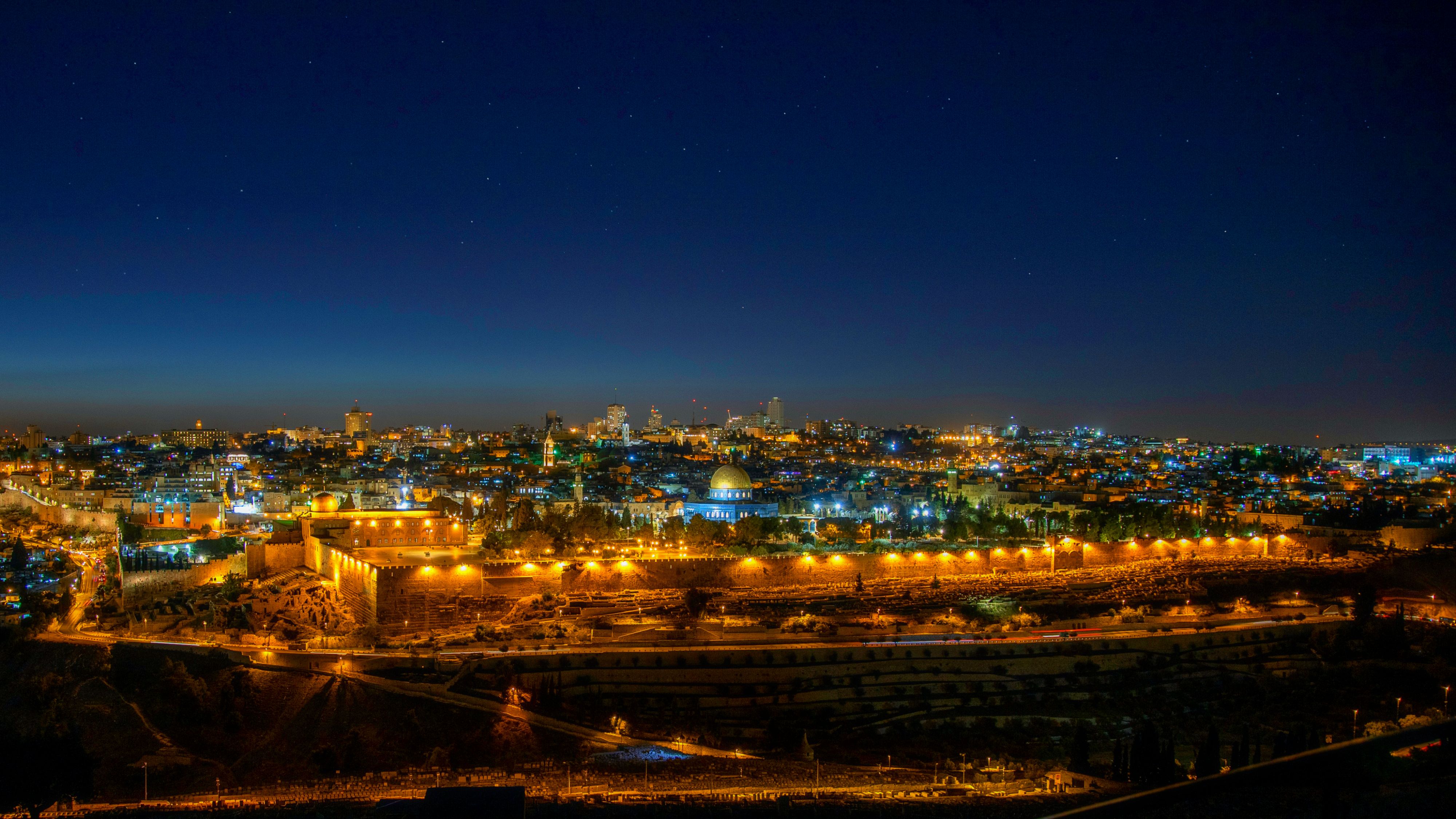
Mount Scopus night view of Jerusalem, Israel. Photo by Sander Crombach on Unsplash
Today, we’re looking at things to do in Jerusalem by night, when sunlight gives way to dusk and, all over the city, landmarks light up. Whether it’s walking along the Via Dolorosa, en route to the Wailing Wall, strolling along Jaffa street, stopping off to grab a bite at Mahane Yehuda Market, or paying a visit to the extraordinary Israel Museum (which is open until 9 pm each Tuesday) we think you’ll remember your experiences for years to come.
And one other thing - just like tourists are often concerned about the security situation in Israel, but once they arrive feel incredibly safe, the same is true of the streets of the capital. Whilst the city is ‘shared’ by Jews, Muslims and Christians, your risk of being robbed or hurt is much lower than in other major cities around the globe. Not to mention that the locals are incredibly friendly, and love to help, in the event that you need directions, assistance or simple advice!
That means if you’re looking for something to see in Jerusalem at night, after the sun goes down, fear not - all you need to do is put on your walking shoes. Let’s take a look at some of the attractions in Jerusalem that await you, on a night tour of Jerusalem. You’ll have no trouble finding fun things to do in Jerusalem at night. Even better, none of these activities will cost you a dime. Let’s begin…
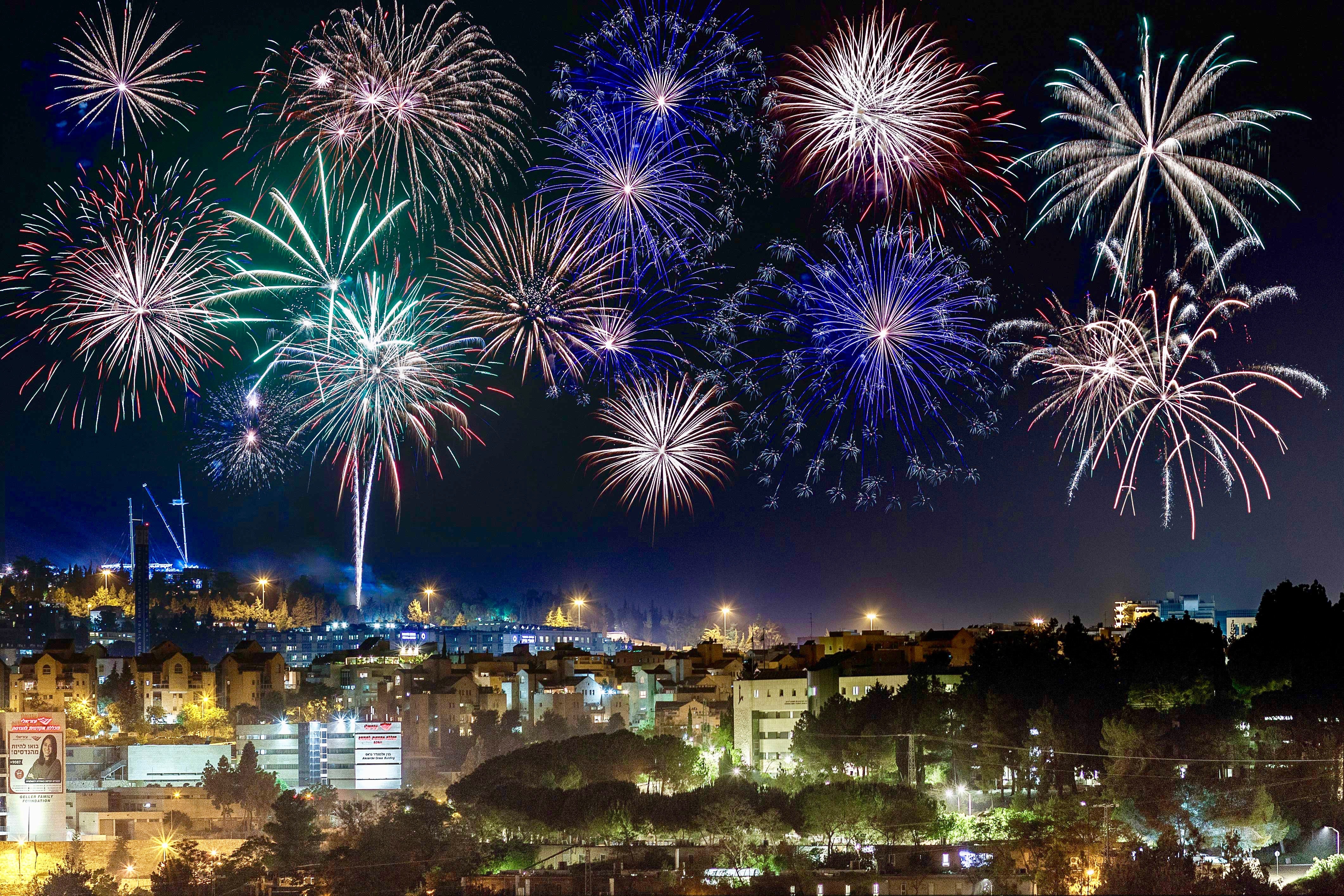
Jerusalem skyline at night. Photo by Lavi Perchik on Unsplash
1. The Kotel / Western Wall / Wailing Wall, Jerusalem
The Kotel (also known as the ‘Wailing / Western Wall’) is the holiest place in the world for all Jews and one to which most aspire to visit, in their lives. Located in the Jewish Quarter of the Old City, it is an exposed section of a much longer retaining wall, which is 57 metres (187 feet) high. But this is not any wall - it is the remaining wall of the Second Temple, built by King Herod (known as the Master Builder of his time).
The Western Wall is so holy to Jews because it lies close to Temple Mount (inside the wider compound of Al Aqsa Mosque) but because of visiting restrictions, the closest to it that Jews can pray is the Western Wall. Temple Mount is where Jews believe the third (and final) Temple will be built, when the Messiah comes, and for believers, it is the place where God manifests his divine presence. The Foundation Stone, within the Mount, is also the place Jews believe creation began and where Abraham was ordered to sacrifice his son, Isaac. This is why, when Jews pray, it is always in the direction of the Wall (and Mount).
Entering into the large plaza and catching sight of the Western Wall is an extraordinary experience for anyone visiting Israel. Up close, you will see men and women (in different sections) touching the stones, swaying in prayer and placing notes to God within the stones’ crevices. The site is not just free but open 24 hours a day - the only ‘condition’ for entrance is a modest dress - women should not have bare shoulders or legs and men should cover their head with a kippah (if you do not have one, you will be given one at no charge).
Truly, there is something magical about visiting this Wall after the sun has gone down. Illuminated, and with Jews there at prayer at all hours, it is a good place to sit quietly and in awe. The best night, arguably, to visit is Friday at dusk when many Jews gather there to dance, sing, and usher in Shabbat (their Sabbath). The prayers they offer have been recited by Jews for centuries, and sitting there gives you the ideal opportunity to learn more about this tradition, as well as enjoy the soulful melodies and even spontaneous dancing!
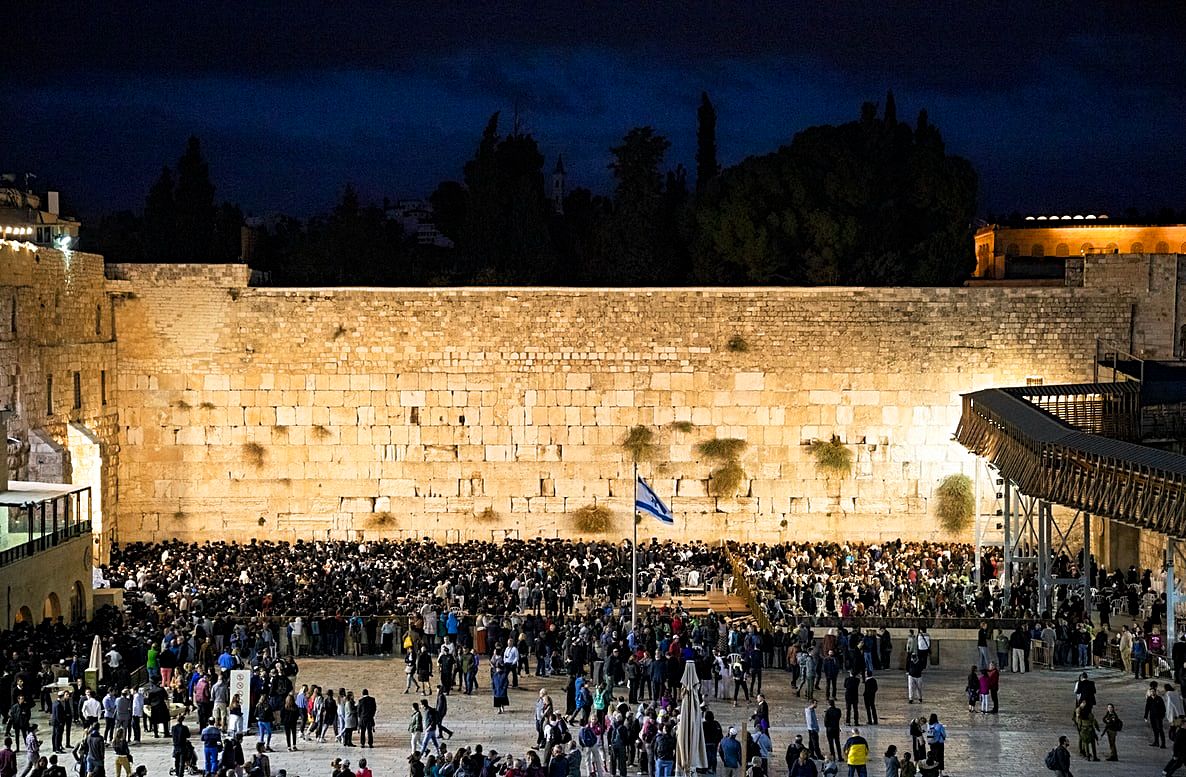
People pray at the Western Wall at night. Photo by Sander Crombach on Unsplash
2. The Jerusalem Chords Bridge
The Chords Bridge (also known as the Bridge of Strings) is a cantilever cable-stayed bridge that, today, is one of the city’s most eye-catching landmarks. Visible from many parts of the capital, it sits at the entrance to the city (it is the first thing you see when you arrive by road) and is currently the tallest structure in Jerusalem.
The Chords Bridge was designed by the Spanish architect and engineer, Santiago Calatrava, and took six years to build. With its 66 steel cables, its design is a fusion of old and new - much like Jerusalem. If you look at it from a distance, it resembles a ship’s sail but (as inspired by the Spaniard) it can also be interpreted as a harp (the harp that King David played in the Bible story) or a tent in the desert.
Calatrava deliberately designed the building with pedestrians in mind (fun fact: he doesn’t own a driver’s licence) and the bridge, made of concrete, steel and Jerusalem stone - has a glass-sided pedestrian walkway. This means that you’re able to walk across it from Kiryat Moshe to the Jerusalem bus station area. Oh, and it’s also illuminated, which makes it even more beautiful to visit by night.
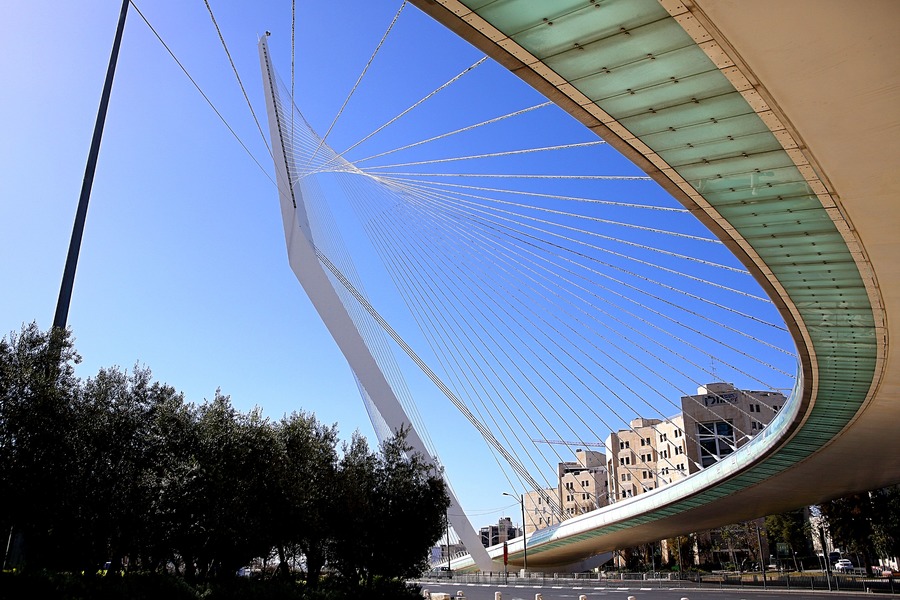
The Jerusalem Chords Bridge by Santiago Calatrava. Photo credit: © Dan Porges
3. Yemin Moshe, Jerusalem
Overlooking the Old City, Yemin Moshe is surely one of Jerusalem’s charming and picturesque neighbourhoods. It also has a wonderful history - it was one of the first residential neighbourhoods established outside of the Old City Walls, at the end of the 19th century. Yemin Moshe’s existence owes itself to the famous financier and philanthropist Moses Montefiore, who hailed from England.
In his lifetime, he made seven trips to what was then Palestine and was so impressed with what he saw that he made vast financial contributions in order that medical clinics and educational institutions could be set up. On his final visit, he set up a fund to be used for the building of six neighbourhoods, to alleviate some of the unsanitary conditions within the Old City at that time. One of these was Yemin Moshe and, erected in 1892, it boasted synagogues, communal cooking facilities and 137 houses, not to mention stunning views over the Hinnom Valley.
Today, it is truly an iconic Jewish neighbourhood, in which many artists live. They are bound by only one condition - that they maintain the quarter’s original character. So if you want to visit this beautiful area at night, feel free, but remember that it’s an area that’s quiet and genteel, so try to respect the privacy of its inhabitants. The ‘stand out feature’ of the neighbourhood, save for its cobbled streets and beautifully manicured gardens, is the famous Montefiore Windmill.
Originally designed as a flour mill, it was used as an observation point in the War of Independence and has huge cultural significance for the neighbourhood. There’s a small building next door in which is a replica of the carriage Montefiore used to travel in, on his journeys. Yemin Moshe is also close to the King David Hotel and YMCA if you’re in the mood for a drink or dinner afterwards.
Yemin Moshe neighbourhood, Jerusalem. Photo credit: © Dmitry Mishin
4. Mahane Yehuda Market, Jerusalem
The Mahane Yehuda Market ("shuk" in Hebrew) isn’t just the best place in town to come and buy your fruits and vegetables - it’s also one of the hippest places to spend an evening. Located between Jaffa Street and Agrippas streets, it has two main open ‘passages’ and in between lots of narrow alleyways and, when night falls, you’re in for a treat.
Historically, when the stall owners went home, the market was deserted but all that’s changed in the last 10-15 years, with the advent of a wide array of bars, cafes and live music. By far and away the best evening to visit is Thursday when it’s jam-packed with locals who don’t have to go to work the next day. There are so many places to grab a bite or drink that you’ll be spoilt for choice, but some of the ones we’d recommend include:
Beer Bazaar - big microbrewery fans, this joint stocks over 100 different kinds of beer and plenty on tap besides. Que Pasa - the tapas here have become a big hit - although there’s no meat served, there are plenty of small fish, vegetable and dairy dishes, including mullet, porcini bruschetta, sardines and tortilla. They also host local musicians, giving you a chance to enjoy some live music.
Meorav Yerushalmi - for all the carnivores out there, this is the best place in town to get a famous Jerusalem mixed grill. All of their delicious meat is stuffed into a pitta (salad and fries on the side!) The portions are enormous and the queues long and if you get there after 11 pm, they may well be sold out!
Azura - this family-run, wallet-friendly spot has been in business for 25 years and we know why - they serve Iraqui, Kurdish and Tunisian dishes at a very decent price. Whether you want hummus, shakshuka, meatballs or chicken stew, you’ll leave sated and happy.
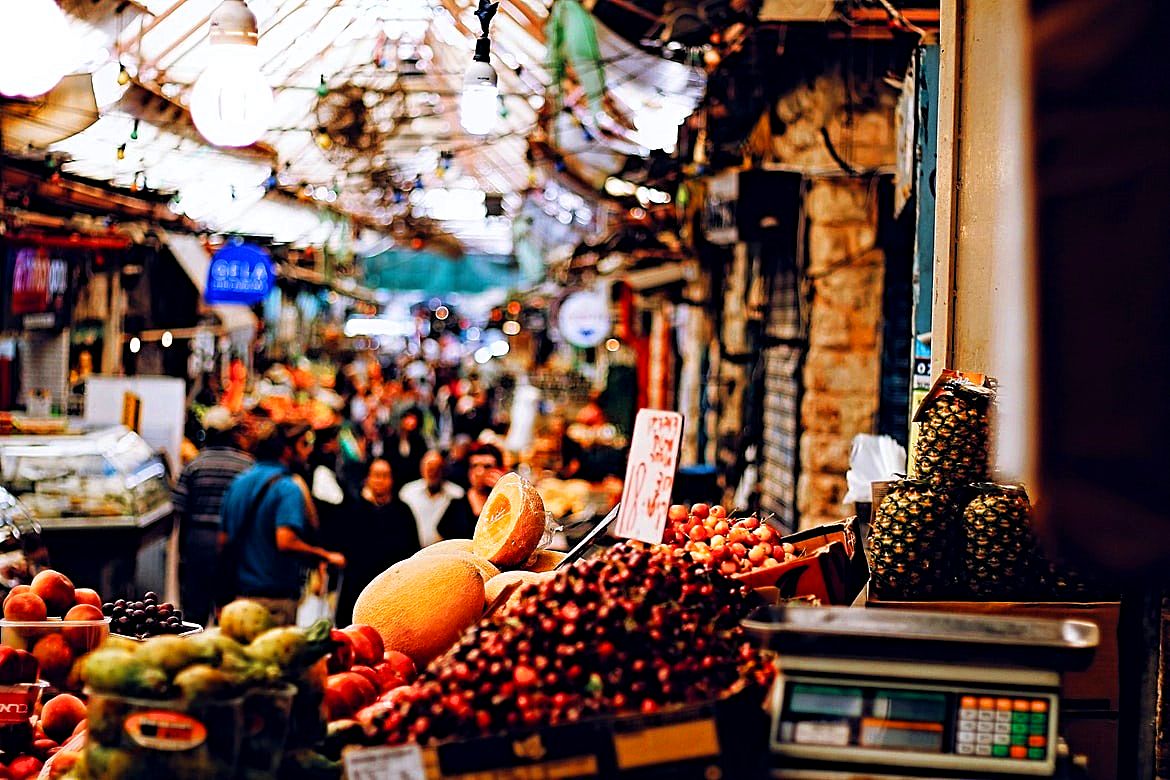
A fruit stall at Mahane Yehuda Market, Jerusalem. Photo by Roxanne Desgagnés on Unsplash
5. First Station (Tachana Rishona), Jerusalem
Close to the German Colony neighbourhood, the First Station is yet another place that’s hip and happening, both with locals and tourists. Historically, it was the last stop on a train line that ran from Jaffa to Jerusalem but fell into disrepair after the service was discontinued. In 2013, all that changed, when the site was renovated and transformed.
Today, it’s a fantastic cultural and entertainment venue, where all kinds of city events, international festivals and food markets are held. The old rail yard is now covered with wooden decks and incorporates old parts of the architecture (the ticket hall, concourse and old station house). Inside, you’ll find pubs, restaurants, food stalls and vendors with their carts. There are many musical events and performances and, particularly in the summer months, it’s a wonderful spot to spend an evening.
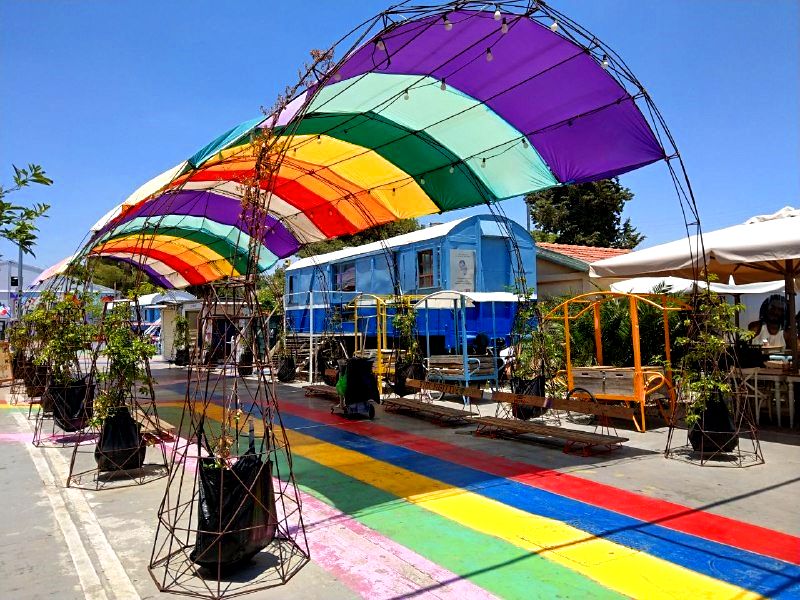
Colourful tents at First Station (Tachana Rishona), Jerusalem. Photo credit: © Dmitry Mishin
6. Mishkenot Shaananim, JerusalemAdjacent to Yemin Moshe, and meaning ‘Peaceful Dwelling’ this was Jerusalem’s very first neighbourhood, built outside the walls of the Old City, on a slope above the Sultan’s Pool, which affords you fantastic views of Mount Zion. Today, this historic spot is very popular with artists, and as you walk around you will see many venues showcasing culture and art. (There’s also a lovely guesthouse there if you’re looking for somewhere tranquil to lay your head!)
The smaller of the original buildings is now home to the Jerusalem Music Centre and Convention Centre, an international cultural institution. Since Yemin Moshe is so close to it, many regard the two neighbourhoods as being ‘merged’. Just like its counterpart, Mishkenot Shaananim it is home to lovely gardens, charming narrow roads and wonderfully-restored residential buildings. And, of course, look out for the windmill!
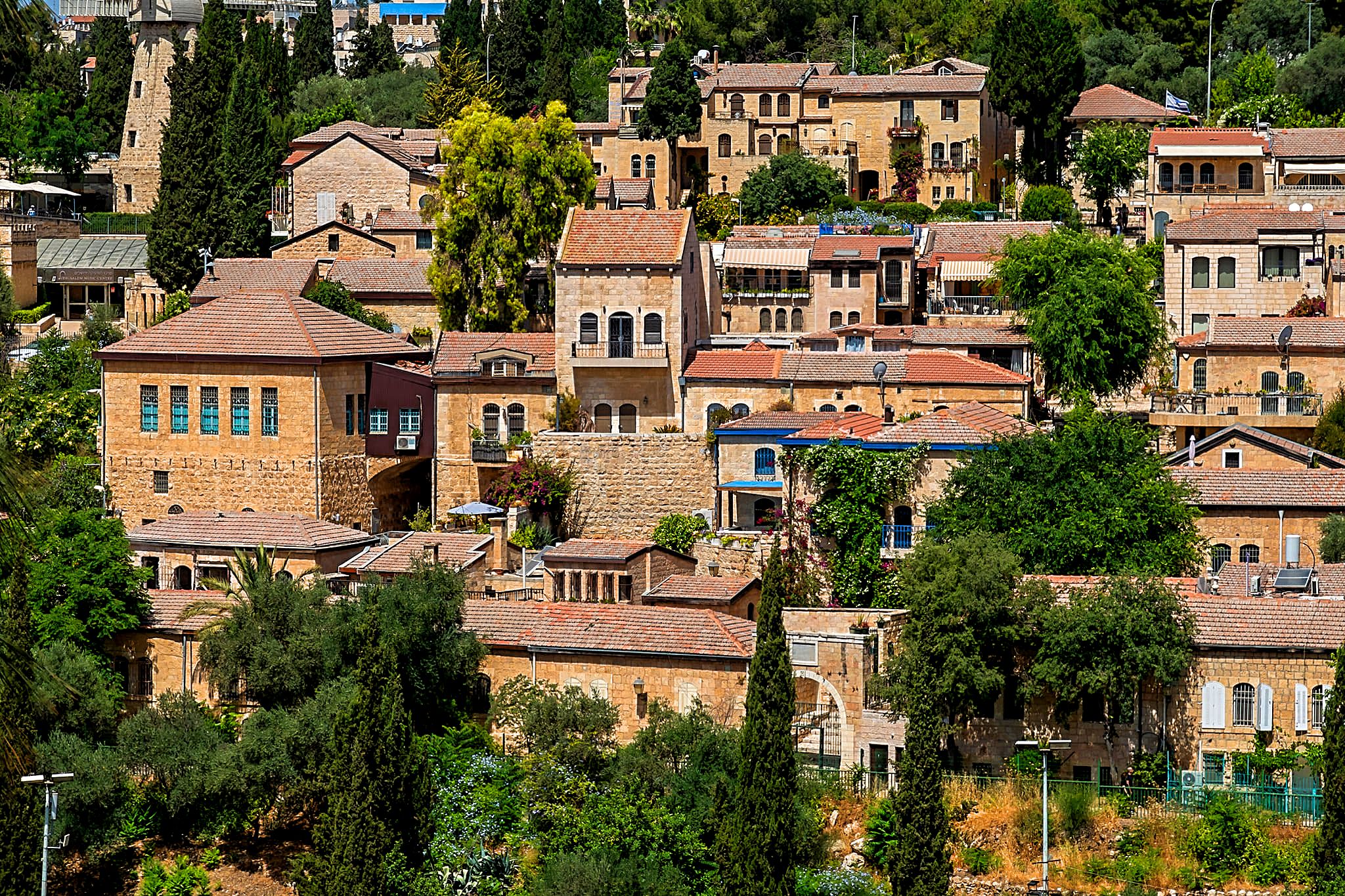
Mishkenot Shaananim neighbourhood, Jerusalem. Photo credit: © Dmitry Mishin
7. Kikar Safra, Jerusalem
This city square, located in downtown Jerusalem, is home to the city’s municipality complex. Its exact location is the once ‘seam line’ between East and West Jerusalem, which was precisely why it was chosen - to demonstrate that the city should serve all residents. Built in 1993, it couldn’t be more different than the previous structure, which was constructed in 1867, in the Ottoman Empire era.
At the primary entrance, from Jaffa Road, you will see a fountain, rows of palm trees and a huge sculpture named ‘Archimedes Screw’. Nearby is the Daniel Garden. The entire plaza is about 4,000 square metres and is surrounded by buildings all used by the city. Kikar Safra is a popular place for Jerusalemites to meet each other, and it’s also known for hosting fairs, festivals and political demonstrations.
Fun fact: this square is the spot to which sports fans always flock when their city’s team wins a prominent basketball or football trophy. It’s also the spot where the largest Sukkah (huts roofed with branches) is built, each Fall, at the festival of Sukkot.
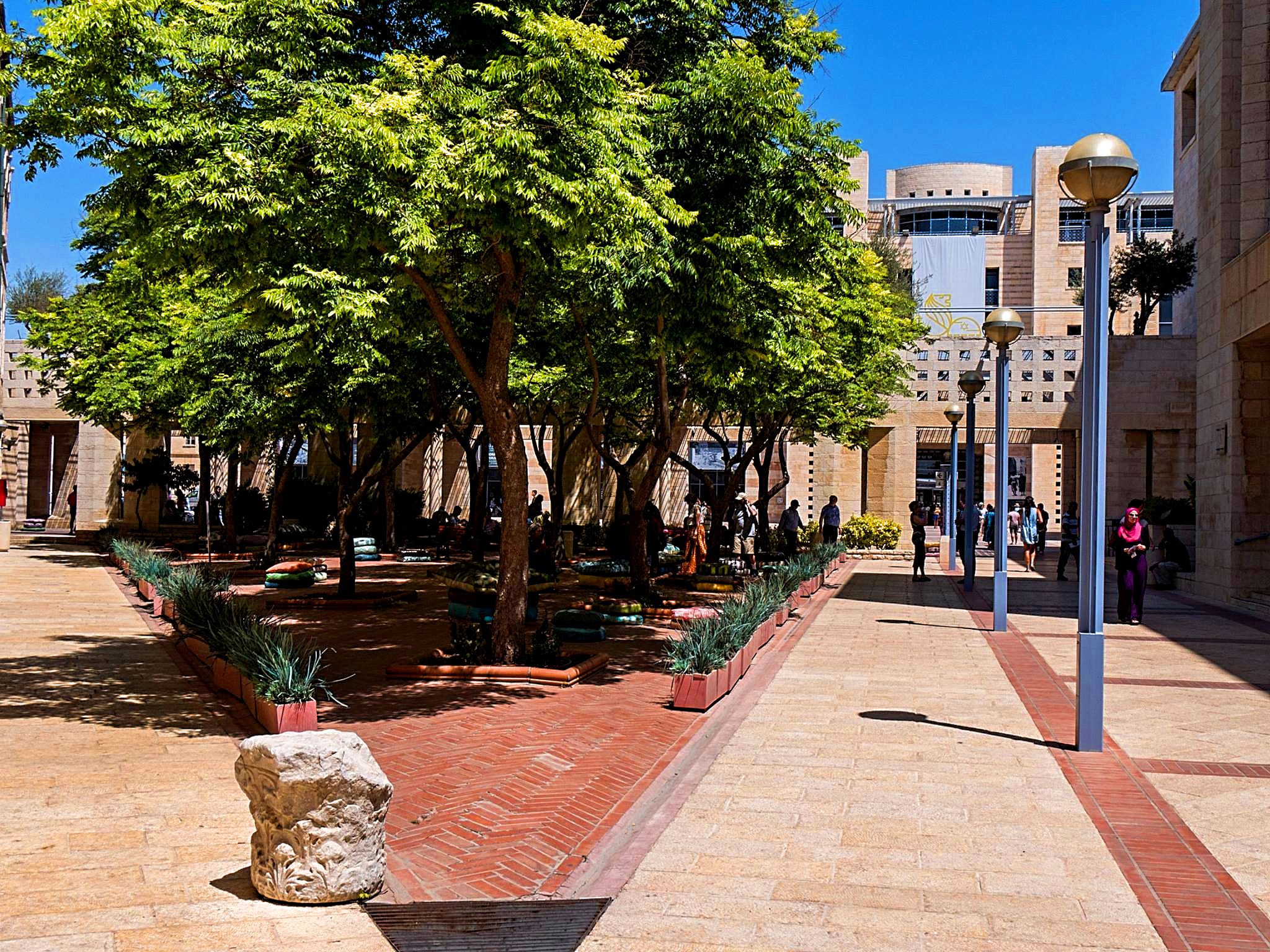
Safra Square, Jerusalem. Photo credit: © Dmitry Mishin
 Login / Register
Login / Register
 Contact Us
Contact Us
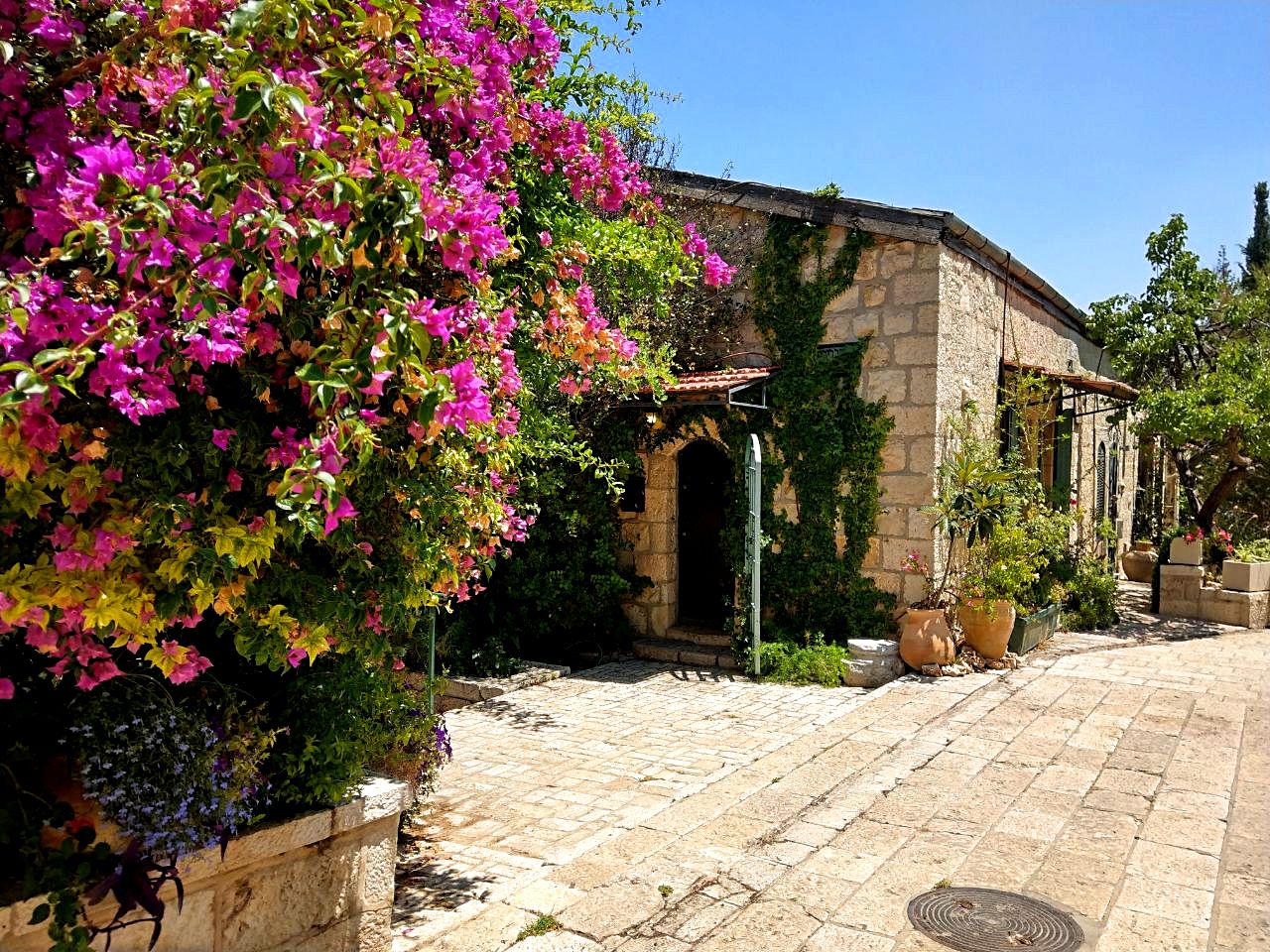
 Certificate of Excellence
Certificate of Excellence Guaranteed Departure
Guaranteed Departure Low Prices Guaranteed
Low Prices Guaranteed 24/7 Support
24/7 Support




